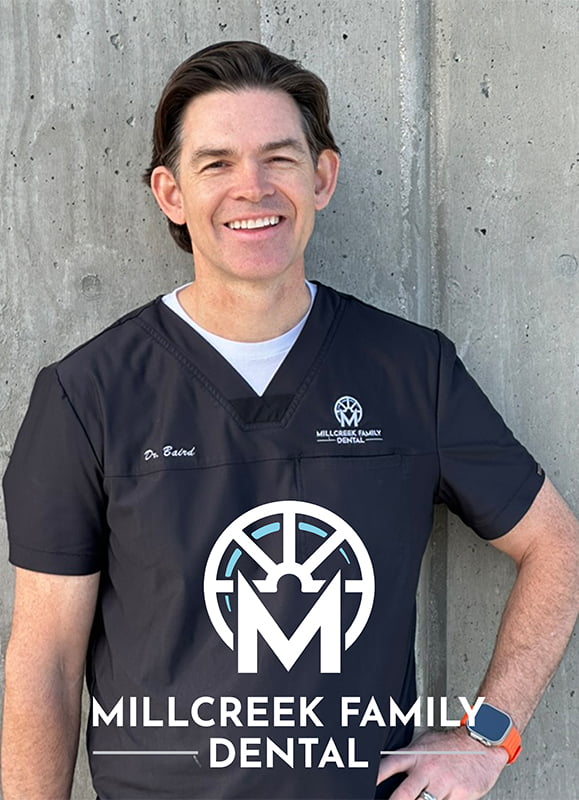Understanding the Metrics that Drive Your Dental Practice (E. 144)
“In dentistry, owner doctors can get weary with the management and love the leadership.” ~Dr. Victoria Peterson
In this special crossover episode of the Investment Grade Practices Podcast and Everyday Practices. Your hosts Dr. Victoria Peterson and Regan Robertson bring together their expertise and insights and cover high-level visionary planning with essential nuts-and-bolts day-to-day practice management.
In episode 143 , Regan and Dr. Victoria Peterson discussed the concept of above-the-line vs. below-the-line thinking – a framework that distinguishes between strategic, aspirational planning and the practical, often challenging aspects of implementation. This week our hosts build on that topic and discuss how this framework applies to metrics. Learn how understanding and leveraging these metrics can transform your practice, from day-to-day management to long-term strategic planning.
As you listen to this episode, we want you to think about the following questions:
- How well do I understand the metrics that drive my practice?
- Do I have a clear distinction between strategic and operational metrics in my practice?
- Am I using these metrics to inform my decision-making and long-term planning?
- Is my practice equipped to balance leadership and management tasks?
EPISODE TRANSCRIPT
[00:00:00] Announcer: The Productive Dentist Academy Podcast Network.
[00:00:03] Regan Robertson: When we talk metrics in the practice, we are talking your financial metrics. That’s your P& L, that’s your revenue top line, your net, your operating costs, your clinical metrics, and your operational metrics. You have even HR metrics. We talk marketing metrics, so you can have lots of different metrics in the practice.
[00:00:23] Announcer: Welcome to Investment Grade Practices podcast, where we believe private practice dentists deserve to get the lifestyle today while building an asset for tomorrow. Join your host, Victoria Peterson, to design the practice of your dreams and secure your financial independence. Let’s get started.
[00:00:44] Regan Robertson: Doctor, did you know that PDA coaching doctors grew 219, 000 on average in just the last 10 months? If your revenue goals fell short this year and you suspect that patient communication and inefficient systems are holding you back, Productive Dentist Academy can help, but you have to take action.
Register today for the PDA conference, March 13th through the 15th in Frisco, Texas. Go to ProductiveDentist. com to snap up your seat. It is the nation’s leading course for growing your practice and your team. Plus, while you’re there, you can set up a free trial. free 60 minute session to identify your own unique opportunities for growth.
And if you act fast, you could score a one on one with PDA’s co founder, Dr. Bruce Baird. That’s right. We’re only offering 10 and then his calendar is full. Don’t wait, go to productivedentist. com right now and have a great 2025. We’ll see you in Texas. Welcome to another exciting. special collaboration with Everyday Practices Dental Podcast.
I am your host, Regan Robertson, here with the delightful, the delectable, the talented, the genius, Victoria Peterson, host of the award winning podcast, Investment Grade Practices. Victoria, welcome today. Well, I’m so excited about this series, Regan. It is fantastic. And we are talking above and below the lines today.
We’re going to talk about metrics. So Victoria, can you give a brief overview of what above and below the line means?
[00:02:03] Dr. Victoria Peterson: Yeah, so above and below the line is a business term. We first learned this from Skip Miller, uh, award winning sales coach and author. And above the line means those things that carry us forward.
So leadership, strategic planning, the vision mapping out, uh, you know, SWOT analysis, what, what is the landscape and the context of my business environment. So that’s. fun. Leadership is dreaming and imagining and watching those larger metrics turn that move the company forward. Below the line is where management lives.
It’s the day to day details of executing on all of those big dreams. I think sometimes, uh, particularly in dentistry, owner doctors get weary with the management and love the leadership. So making sure that you have a highly skilled team. skilled, highly trained office manager that can function as a comptroller that looks at production, collections, write offs, AR, works with your CPA, does those things.
Probably one of the most helpful things doctors can do.
[00:03:05] Regan Robertson: I am particularly passionate about this subject because I think specifically Skip Miller’s above and below the line have helped me in my own career go from an individual contributor to be able to sit in the c suite and have conversations and really it comes down to an understanding of what’s important to the individual that you’re sitting across the table from and how they view the world and more importantly how they view the metrics in the business.
Victoria, Uh, for all of you listening, she has been my CEO for 13 years and has sat with me countless times teaching me how she looks at a PNL and what metrics are important to her as a CEO. Back when I was an art director, like in the very, very beginning, she was talking to me about what, uh, How she approaches finance and that really does get us out of the doing and into the thinking and strategizing and and looking at the efforts that we’re doing today and marrying that with the results at the end of it.
So this particular episode, I am very passionate about because we are going above and below the line in our metrics and I’m telling you hygienists. Support team, administrators, office managers, if you want to communicate great with your doctor, this is the episode to listen to. So Victoria, let’s dive in.
[00:04:27] Dr. Victoria Peterson: Yeah, I think the examples are, are really going to be helpful here because you, you do measure the same things. above and below the line, you’re just looking at a different level of detail. So let, can I just start out and I want to hear very specifically the marketing metrics you look at and maybe I’ll walk through a few financial or operational metrics.
[00:04:51] Regan Robertson: Absolutely. Yes. So when we talk metrics in the practice, we are talking your financial metrics. That’s your P& L. That’s your revenue top line, your net, your operating costs, your clinical metrics, and your operational metrics. You have even HR metrics. We talk marketing metrics. So you can have lots of different metrics in the practice.
And because of my background, marketing will be where I, I stick and play. And, uh, so there is cost of acquisition that we look at. There’s your return on investments. So how much you’re spending, how much you’re getting back in that. There’s your website conversion, your social media engagement, your community presence, your online reputation, and how you’re showing up your raving fan index, which is a PDA term.
So when you are talking about your referrals, how many referrals you’re getting in, those are marketing metrics.
[00:05:41] Dr. Victoria Peterson: Well, why don’t we stick with that and which one of those are above the line that I’m looking at as a leader moving the business forward and what are examples of below the line detail? Okay,
[00:05:52] Regan Robertson: so I’ll tell you, I’ll tell you, I’ll go all the way back to before I was even with, with PDA.
Uh, I used to do email, uh, marketing for, uh, Skincare company. Super fun. It was my job to come up with the fun promotions. And so I would say, you know, buy 75 and these beauty products and you can receive the, take a spin on the wheel and you can receive the diamond special, the Ruby special or the Emerald special.
And it was really, really fun to see the results come in. So I would gather all that up and I would run over to my C suite back then and say, okay, we got this many clicks. On this email, this many people opened it, uh, this many people took advantage of the diamond special or the emerald special. So I would get very down below the line and I would, you know, even talk about the languaging that I was using.
All of that is great stuff. And as an individual contributor, that’s fantastic. They would come back with me and say, Reagan, what’s our cost of acquisition? I had no idea what that meant. My eyes crossed and I thought, Oh, I better go back and do some more research. So above the line, people look at cost of acquisition.
It is great to get new patients in the door. How much does it really, truly cost us to get that patient in the door? And we can talk about the marketing spend. We should also talk about. How much time it took for creative, we should talk about how much time it took to, uh, do phone call conversion training for our team, uh, any staff time available.
So when you look at that in totality, that is the cost of acquisition. So an above the line discussion would be, um, in a quarterly meeting, our cost of acquisition is 10 percent less than last quarter. This is exciting because this means this looks like we’re being efficient. We are getting more, you know, we’re getting the right amount of new patients in and we’re obviously being efficient with our budget.
That’s how an above the line conversation goes. The below the line individual contributor, and this is why they go together so well, is how did that happen? So the above the line looks at the result and wants to forecast it out. The below the line says, How did this happen? Why did this happen? What do we need to keep doing?
Right? So a below the line answer to that would be, well, our marketing team actually discovered that our 20 Facebook ads that we’re running, um, was way outperforming our Google ads campaign. And we were spending 50, uh, per click or whatever it was for our Google ads campaign. So we simply reallocated our budget and saw a huge improvement.
[00:08:25] Dr. Victoria Peterson: Oh, that’s very helpful, right? You know what? I love that so much and I’m going to, this is where, uh, you and I just meet in the middle because I love marketing so much, but I take it from a very data perspective, right? And you, and you come at it from the creative perspective. So if we were in. A conversation if we were in a business meeting and we were looking at marketing just as you laid it out and we were looking at cost of acquisition, conversion rates, things like that, then I might look at it above the line from an operational standpoint or a let me take it on the clinical standpoint.
This is where clinical and operations kind of come together, um, and say, Our cost of acquisition was 50. Our average patient lifetime value is 585. So, I might be watching our patient lifetime value and is that going up? So, that’s a way to measure the quality of new patients that we’re getting. And, To put this in the bigger context, let’s go into what are some of the problems and we’ll just, we’ll stick with marketing and the pull through, right?
So we have awareness and brand and the phone rings and patients come in and we say some stuff and they got some cavities and we wag our finger and they say yes and then we do the treatment, right? So there’s a full funnel here. So you, you’re focused on volume, how many patients, what’s our cost of acquisition, and then once it comes in the practice, we’re looking at quality.
Quality and the problems that we might be solving through marketing. So this is very top level. This is very big picture above the line is what are our practice collections and how do I improve that 15 percent this year? Right. So if I’m a 1. 5 million practice and I want to grow 300, 000 and go to 1. 8, then I would start going down the line.
Right. And so the first thing I might look at is revenue cycle management. Are we collecting 100 percent of what we produce? And the answer to that is almost always no. Particularly if you’re in network insurance. Oh, of course, yeah. I would want to operationally, if I wanted to grow 300, 000, if that’s where I’m going above the line, then one of my economic objectives might be to reduce, uh, insurance write offs by 50 percent this year.
And like really take a hard look at that. And then my second economic objective might be increase new patients from blank to blank. So if I knew I was going to reduce by 500 patients in my practice, I would want to activate a marketing plan to replace those 500. And if I knew that on a PPO plan, my patient value was 585, but my fee for service patients, my average value was 1, 000.
Well, I don’t have to replace one for one. So this is where above the line strategic planning really helps. So you could say, I want to get my cost of acquisitions down. I want to increase the quality of what I’m doing. And can we do those things simultaneously? Sometimes those things work together, sometimes they don’t, you might, then you start anchoring and weighing the, the strategy towards what problem am I solving?
If your practice is saturated, you feel like I’ve used every chair I can use, my, my chair utilization is, you know, optimized, but I still need to and want to grow, well, then you start looking at the quality of revenues. And then you start looking at marketing and the volume, and I loved how you explain the above the line would be things like cost of acquisition.
It would be reach. Uh, you know, what’s our radius? Do we attract from a three mile radius, a 10 mile radius, a 50 mile radius? I know your team at the Phoenix Dental Agency, it’s nuts, um, average patients drive 20 to 50 miles because of the marketing and because of the service mix. So then below the line is how many phone calls did we get?
How many did we convert from those? How many came in from those who came in? How many rescheduled for their next visit? visit. So the neat thing is with tools like Dental Intel and some of the dashboards that we put together here at PDA, it’s so much easier to measure this than it was back in the day when we had pencils and paper and abacuses.
[00:12:58] Regan Robertson: I went below, below, below the line. So I went into the engineer thinking, which is another, you know, if you’re, if your area of expertise. Is for example, hygiene, you’re going to, you’re going to go all the way down into the science of it. So when I hear you say the lifetime patient value switching from PPO into fee for service, you’ve got to look very carefully at where your ideal patients are.
So I was thinking immediately, okay, we’ve got to run a demographic map. We’ve got to get the psychographics of, of. Everybody. So we’ve got the coolest software that we use at Phoenix and I will immediately go into a community and we will start finding where those particular patients live, where they shop, what kind of cars they drive, what kind of music they listen to, what kind of community events they like to start to build out and be smart about the marketing plan that’s put together.
So it is, it is, it is. a philosophy of inside out. So making sure that you are efficient and strong in your internal marketing and uh, what are you doing for your internal marketing? Do you even know what internal marketing is doctor? And if not, that’s a really great area where you can increase that cost of it, uh, acquisition and have a higher conversion rate with far less dollars put in the bank.
So I start thinking about all the ways that we can make that happen. And, and I don’t know, that a lot of marketing agencies even look at lifetime patient value. That’s been something new, um, to me, uh, since PDA.
[00:14:23] Dr. Victoria Peterson: Well, and it’s again, you need to have big data, uh, analytics to be able to look at that. You could, um, there are other ways to get it.
It’s just harder, but this is, I, I just love that to build an investment grade practice. You do have to have these management pieces put in place, um, listeners, dear listeners, you do not have to understand patient demographics and consumer behavior at the depth that Reagan does. That’s why you hire great agencies to do that work.
Um, we, we run on a, a bunch of Esri softwares and different things, uh, behind the scenes to, to get those kinds of values. But, um, it’s, it’s more exciting than ever. Um, as a solo practitioner or a small group owner, you can be competitive with the big DSOs just by understanding a few key metrics, understanding how your business grows and at PDA, we always say that, um, you take care of your patients, create a wow experience for them, create a thriving ecosystem for your team and the numbers take care of themselves and that’s true.
But it is also really true that you need to know which numbers to pay attention to so Profitability is number one and then you work backwards from there So what are my overall revenues and profits? Is there any way I can optimize my spending? Are there methods to accelerate my debt, you know in the tax planning part of it?
Then you go into if I if I Maximize my budgets. If I’ve optimized that, then to gain more revenue, I have to increase production. And so then the metrics just keep going backwards from there. So I think, uh, while I say above the line is looking out once and you know where you want to be, let’s say I want to be able to sell my practice in five years and I would like to get it.
Uh, you know, I, I’d like to have 500, 000 in EBITDA so that I’ve maximized my, there’s that number, there’s that number, which is not an accounting term. That’s a finance merger and acquisition term. It’s just invaded dentistry. So if I have a 2 million practice and I know I would like to exit with two and a half million, something like that, you know, I might, I might need three, four or 500, 000 in EBITDA.
So you work with your planners on that. That’s a big That’s a signpost. That’s an anchor and you should be looking five years out. That’s what above the line strategy is all about. And then you work it backwards. You know, how much would my growth rate have to be? What would we have to do internally to hit that growth way?
And it really does. It goes, you know, Profits, revenue, production, the efficiency of that production, like write offs and adjustments. Then it goes diagnostic skills, diagnostic acceptance, then it goes to patient flow and patient flow goes back to number of traffic on the website. You know, it. All of these numbers are attached, and it’s really difficult to pull out just one.
[00:17:34] Regan Robertson: Well, everything is connected. That’s the truth. Everything impacts something else. I’m, I’m very pleased that you brought up EBITDA because I think every practice owner has at least seen a P& L. And I know that I personally have experienced it. experience, doctors that take their PNL, it’s like printed for them once a quarter and they shove it in a drawer and they never look at it again versus doctors that have it, um, you know, uh, in real time on their phone.
So they can get the monthly PNL and they can look at it immediately and they have metrics pulled out that matter to them. And one of the most important things that I find with investment grade practices is that time and time again, I do not hear about doctors understanding what EBITDA stands for and that’s earnings before interest taxes, depreciation, and EBITDA.
Amortization and that that number is often used, um, you know, as the, as the anchor point, right? For your multiple, when you are going into being, being bought out. And, um, and I don’t think that, that many know about that or even know how to look at it. They understand how to look at their net. They know what to look at when everything is said and done at the end, what they get to take home as profit.
And so understanding just that little difference To me seems to make a very powerful impact on where your life is going to go, how you plan and the way that you see your goals. So in summary for me, it really comes down to understanding the big ones, but then how to communicate it and how to communicate it up to.
The, the practice owner or practice owners, how to communicate that down in a way that, that your team can make effective change. So while doctor, I know you really don’t care how many monthly visitors you have to your website because that doesn’t necessarily equal how many new patients are in your chair.
That is a metric that means something to your website team. So if you say to them. You know, we only got 20 new patients this month and I was really expecting 50 that can let the marketing team know that they need to go and look at those types of metrics. How many visitors went to that specific landing page?
What was the conversion rate of that? What was the heat mapping? So we can. I don’t know about other marketing agencies, but I know in ours, you know, we can see where eyeballs fall on a page. Did we not hook them immediately and pull them down the page? I don’t think there’s
[00:19:53] Dr. Victoria Peterson: a doctor out there that needs to know all of this.
No, no. And that’s,
[00:19:58] Regan Robertson: I think that’s the example. We nerd
[00:20:00] Dr. Victoria Peterson: out like doctors nerd out on titanium in their, in their implants.
[00:20:05] Regan Robertson: Yeah, that is very below the line. Well, and that’s where everything is connected, right? That’s where everything is connected. You don’t, you don’t explain every single thing that you’re doing when you’re in a patient’s mouth or when you’re even presenting treatment, but you let them know their own above the line.
What is the problem? What is the result after you go through treatment? What is the long term benefit? Which is interesting because that’s kind of like, patient lifetime value in a whole different way. Well, there’s some great examples of metrics and how you can flow above and below the line. Thank you so much, Victoria and investment grade practices.
[00:20:38] Announcer: Thank you for tuning into this episode of investment grade practices podcast. If you find value in this episode, help us spread the word by passing it along to a dental friend subscribe iTunes or Spotify. Learn more about building your investment grade practice at ProductiveDentist. com Today.
Have a great experience with PDA recently?
Download PDA Doctor Case Studies
















